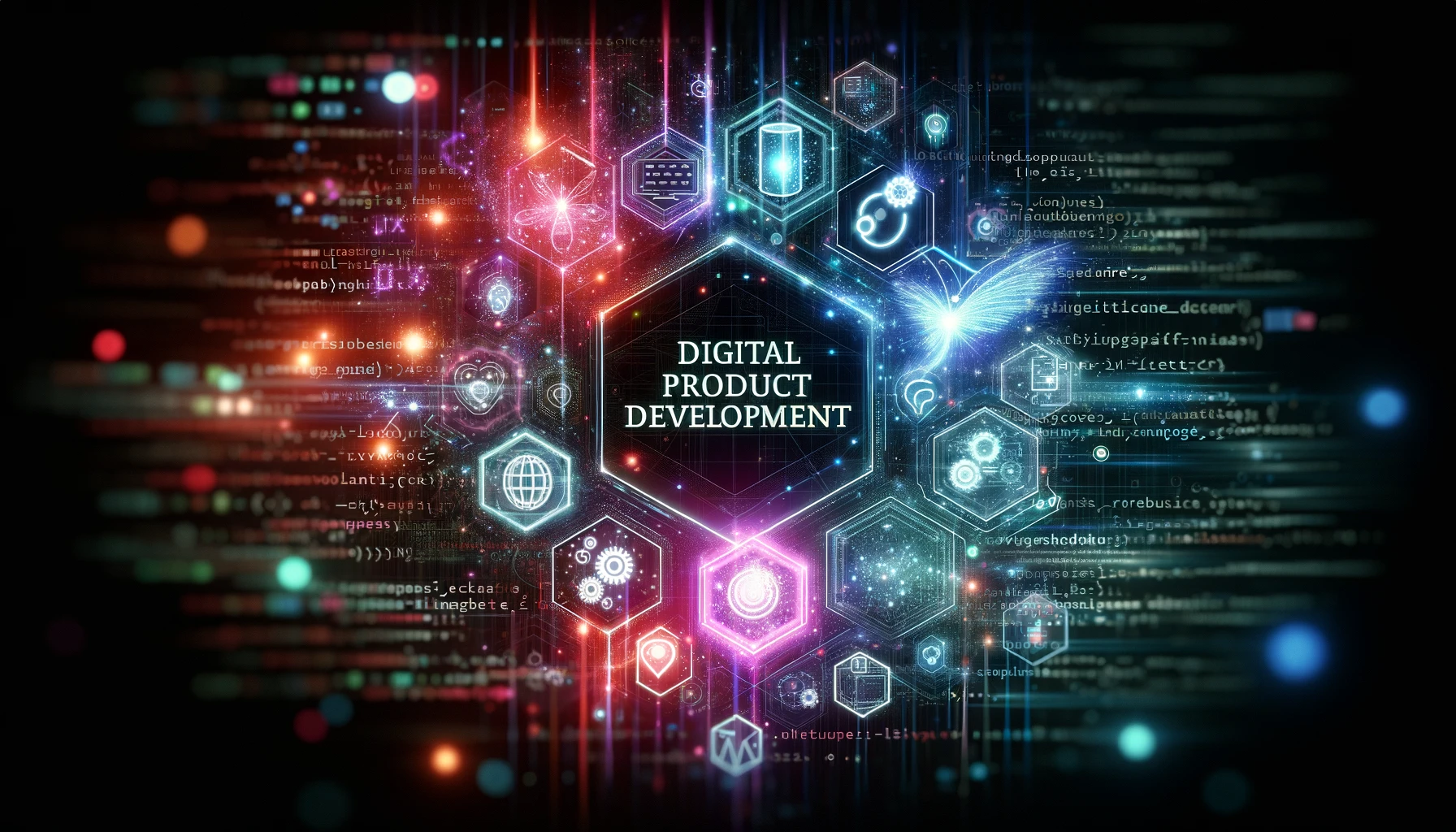Table of Contents
As we navigate the ever-evolving 21st-century landscape, the significance of digital product development becomes increasingly pronounced. Positioned at the forefront of innovation, it serves as the linchpin for companies striving to maintain competitiveness in the fast-paced digital era.
In an environment where change is constant, embracing innovative approaches is imperative for sustained success. This article delves into the intricacies of digital product development, unraveling its pivotal role in shaping the modern business paradigm.
Seven pioneering approaches take center stage, revolutionizing how products are conceived, designed, and ultimately introduced to the market. These groundbreaking strategies not only address the challenges posed by technological advancements but also offer proactive solutions to capitalize on the myriad opportunities presented in the digital landscape.
From Agile Methodology’s iterative and customer-centric focus to the human-centered approach of Design Thinking, each approach brings a unique perspective to the digital product development spectrum.

The incorporation of Lean Product Development, DevOps Integration, Minimum Viable Product (MVP), Blockchain Integration, and the infusion of Artificial Intelligence (AI) and Machine Learning (ML) collectively redefine the contours of effective product development in the digital realm.
This exploration serves as a compass for businesses navigating the complexities of the contemporary market, providing insights into the transformative power of these innovative methodologies within the domain of digital product development.
1. Agile Methodology
Agile Methodology stands as a trailblazing approach in the realm of Digital Product Development. This innovative strategy prioritizes iterative development, fostering collaboration, and actively seeking customer feedback throughout the entire process.
Unlike conventional methods, Agile offers unparalleled flexibility, enabling swift adjustments to evolving requirements. It revolves around breaking down the development journey into manageable sprints, each delivering tangible progress.
The significance lies in the prompt responsiveness to user feedback, ensuring the final product is finely tuned to meet and exceed customer needs. Embracing Agile empowers development teams to navigate the intricate landscape of digital innovation seamlessly, fostering adaptability and responsiveness.
In essence, Agile Methodology emerges as a cornerstone in modern product development, embodying a dynamic and customer-centric approach that is indispensable in the fast-paced, ever-evolving digital arena.
2. Design Thinking
Design Thinking revolutionizes Digital Product Development by prioritizing a human-centric ethos, placing end-users at the heart of the process. This innovative methodology necessitates a comprehensive understanding of users’ needs through empathetic engagement, followed by ideation, prototyping, and rigorous testing.
By immersing developers in the user’s perspective and addressing pain points, Design Thinking ensures that digital products are functional and resonate profoundly with their intended audience.
This empathetic focus translates into heightened user satisfaction and increased adoption rates. By continually refining and enhancing products based on user feedback, Design Thinking establishes a framework that aligns seamlessly with the iterative nature of digital product development, fostering a culture of innovation and user-centered design.
In a landscape driven by user expectations, Design Thinking emerges as a critical strategy, elevating the effectiveness and relevance of digital products in a competitive market.
3. Lean Product Development
Lean Product Development, inspired by Lean Manufacturing, centers on efficiency and value delivery within the realm of Digital Product Development. By combining Lean methodologies with statistical analysis, Lean Six Sigma identifies key process development areas and drives measurable improvements, ensuring continuous refinement and optimization. Stemming from the principles of waste reduction and optimization, Lean methodology places a strong emphasis on continuous improvement.
By minimizing resources while maximizing output, this approach ensures streamlined processes, expedites market time, and elevates digital product quality.
It becomes an invaluable strategy in the digital product development toolkit, fostering a culture of efficiency and adaptability. Lean principles address the challenges of a rapidly evolving digital landscape, allowing development teams to respond nimbly to changing requirements and market dynamics.
In essence, Lean Product Development is a cornerstone for creating digital products that not only meet but exceed user expectations through a process of continual refinement and enhancement.
4. DevOps Integration
DevOps integration plays a pivotal role in optimizing the Digital Product Development lifecycle by fostering collaboration between software development and IT operations teams. This innovative approach addresses the historical silos between development, testing, and deployment, ensuring a cohesive and efficient workflow.
Through streamlined processes, DevOps mitigates bottlenecks, accelerates development cycles, and significantly enhances overall productivity.

By breaking down barriers and promoting continuous communication, it creates a synchronized environment that facilitates quicker responses to evolving market demands and dynamic requirements. The seamless integration of development and operations enables a continuous delivery pipeline, ensuring that updates and improvements are efficiently delivered to end-users.
DevOps in Digital Product Development is a strategic paradigm shift, aligning teams, reducing friction, and ultimately contributing to the swift and successful delivery of high-quality digital products in today’s fast-paced technological landscape.
5. Minimum Viable Product (MVP)
The Minimum Viable Product (MVP) strategy is a pivotal aspect of digital product development, emphasizing the release of a product with the essential features necessary to fulfill user requirements. By adopting this approach, developers gain a strategic advantage in the early stages of the product lifecycle. The MVP allows for swift market entry, facilitating valuable feedback from users and stakeholders.
This iterative feedback loop becomes instrumental in refining and enhancing the product based on authentic user experiences. Importantly, the MVP strategy minimizes the inherent risks associated with extensive resource investments in a full-scale product that may not align with user expectations.
This prudent and cost-effective methodology ensures that the final product is finely tuned to meet user needs and preferences, embodying an efficient pathway for continual iteration and improvement in the realm of digital product development.
6. Blockchain Integration
Blockchain Integration is a transformative force in the realm of Digital Product Development, ushering in decentralized and secure solutions that redefine traditional processes. This revolutionary technology enhances data integrity, ensuring an unalterable record of transactions and interactions.
It goes beyond data security, extending its impact to supply chain management, introducing transparency and traceability. Through the implementation of smart contracts and decentralized applications, blockchain elevates digital products to unparalleled levels of security, fostering a trustworthy ecosystem for users.
This integration not only safeguards sensitive information but also empowers users with unprecedented control over their data. The decentralized nature of blockchain ensures that information is distributed across a network, reducing the risk of single-point failures.
In essence, Blockchain Integration emerges as a cornerstone in the evolution of Digital Product Development, providing a robust foundation for building products that prioritize security, transparency, and user trust.
7. Artificial Intelligence (AI) and Machine Learning (ML)
The infusion of Artificial Intelligence (AI) and Machine Learning (ML) into the realm of digital product development signifies a paradigm shift, ushering in a new era of intelligence. AI and ML algorithms, pivotal components in this transformation, bring forth a spectrum of capabilities.
These technologies excel in deciphering extensive datasets, enabling predictive analytics that fuel informed decision-making. Moreover, they elevate user experiences to unprecedented levels of personalization.
By harnessing the power of AI and ML, digital products not only analyze user behaviors but also adapt and evolve dynamically. This dynamic evolution ensures that products align precisely with user preferences, offering increasingly sophisticated and tailored experiences.
In the landscape of digital product development, the integration of AI and ML represents a cornerstone, amplifying the capacity to deliver products that are not just functional but intuitively responsive to the evolving needs of users.

Conclusion on Innovative Digital Product Development
In the swiftly evolving domain of digital product development, maintaining a competitive edge demands the adoption of innovative methodologies in sync with the dynamic landscape.
The seven highlighted approaches—Agile Methodology, Design Thinking, Lean Product Development, DevOps Integration, Minimum Viable Product, Blockchain Integration, and AI/ML—form an extensive toolkit for developers striving to craft digital products that not only align with user expectations but also foresee and surpass them.
These strategies, seamlessly integrated into the digital product development process, empower businesses to adeptly navigate the intricacies of the digital era. They infuse projects with agility, ensuring responsiveness to changing demands, enhancing efficiency, streamlining workflows, and underscoring a commitment to delivering products that stand out in the competitive digital marketplace.
In essence, the amalgamation of these approaches propels digital product development towards a future marked by innovation, user-centricity, and sustained success.